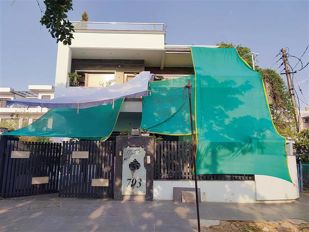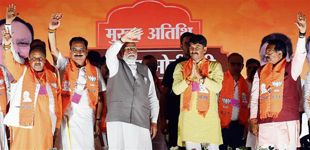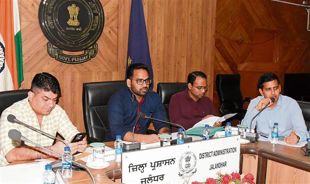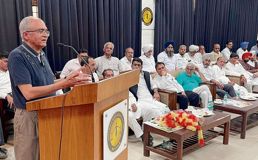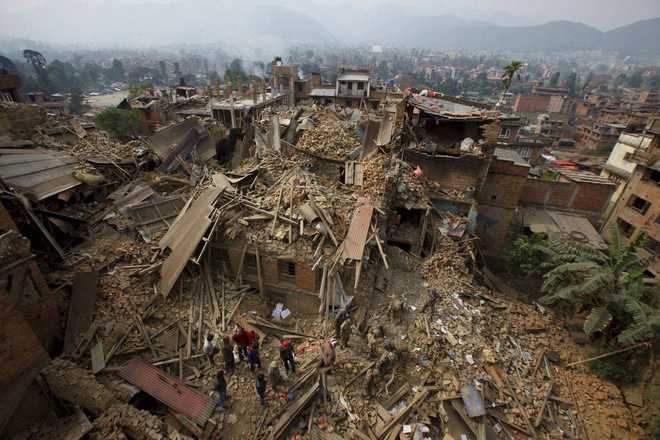
In 2015, a magnitude 7.8 earthquake struck Nepal. — File photo
Geneva, December 5
Earthquakes hitting densely populated mountainous regions, such as the Himalayas, are bigger in magnitude because of a fast tectonic-plate collision, according to a study.
The finding by researchers from ETH Zurich in Switzerland provides a more complete view of the risk of earthquakes in mountainous regions.
The study shows that the frequency and magnitude of large earthquakes in the densely populated regions close to mountain chains -- such as the Alps, Apennines, Himalaya and Zagros -- depend on the collision rate of the smaller tectonic plates.
In 2015, a magnitude 7.8 earthquake struck Gorkha-Nepal, and a year later, Norcia, Italy suffered a magnitude 6.2 earthquake.
Previous research has attempted to explain the physical causes of earthquakes like these, but with ambiguous results.
For the first time, researchers show that the rate at which tectonic plates collide controls the magnitude of earthquakes in mountainous regions.
This is because the faster they collide, the cooler the temperatures and the larger the areas that generate earthquakes. This increases the relative number of large earthquakes, they said.
"The impact of large earthquakes in mountain belts is devastating," said Luca Dal Zilio from ETH Zürich.
"Understanding the physical parameters behind the frequency and magnitude of earthquakes is important to improve the seismic hazard assessment," said Zilio, lead author of the study published in the journal Earth and Planetary Science Letters.
There are seven large tectonic plates and several smaller ones in the Earth's lithosphere -- its outermost layers.
These plates move, sliding and colliding, and that movement causes mountains and volcanoes to form, and earthquakes to happen.
The researchers developed 2D models that simulate the way the tectonic plates move and collide.
The seismo-thermo-mechanical (STM) modelling approach utilises long-time scale processes to explain short time scale problems, replicating the results observed from the historical earthquake catalogues.
It shows graphically the distribution of earthquakes by their magnitude and frequency that are caused by movement in the orogeny -- a belt of the Earth's crust involved in the formation of mountains.
The simulations suggest that the magnitude and frequency of the earthquakes in mountainous regions are directly related to the rate at which the tectonic plates collide. — PTI























